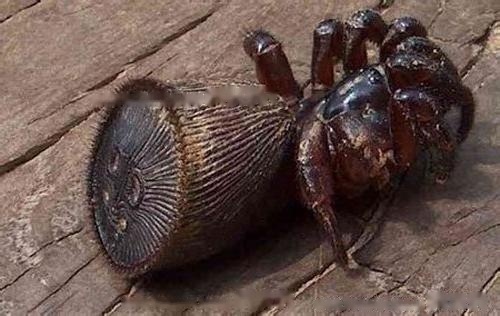The money trap spider comes from the Southeast Asian rainforest abroad. Because of its beauty, docility, easy to keep, valuable and rare, it has always been a sought-after product in the foreign pet market. So feeding requires extra attention.

Money trap
1. Breeding box
You can choose one P850CC PP plastic bowl (transparent/white), the size (mouth diameter * bottom diameter * height) 14.2*8.5*8.2cm. The cost is five cents. This PP plastic bowl is very suitable for raising spiders with a body length of less than 3CM, and the cost is low.
2. Cushion
It can be used as a burrowing burrower, such as tiger-patterned bird catcher/Laos black kingfisher/large wart spider/Vietnamese interlegs/Hainan bird catcher For spiders, the bedding materials are all local materials, go to the mountains to find humus soil, and the PH value is between 5-7. For other spiders, we only lay 1CM thick, while for money trap spiders, we lay 2-3CM thick. On top of the bedding, place a few dry leaves cut into different sizes to serve as traps for the spiders. Sterilize in the microwave for about 4 minutes, and let cool before use. The moisture content of the mat material is preferably 16%-18%. Too wet or too dry mat material is not good for the growth and development of spiders, that is, if you hold it tightly with your hands, there will be no water, and if you let go of the soil, you can loosen it.
3. A mineral water bottle cap (or a small cup), a piece of sponge slightly smaller than the bottle cap.
After the sponge absorbs enough water, put it in the bottle cap and put it into the rearing box together. One is for the spider to absorb water, and the other is to adjust the humidity in the rearing box. It should be observed every 3-5 days, and it should be cleaned in time if the bottle cap and sponge are found to be soiled by spiders.
4. Put the spider into the rearing box and close the lid.
Keep the brood box in a cool, damp place. Do remember that spiders should not be exposed to the sun!
5. Feeding
Feed the spiders every five to seven days with mealworms , soft-shelled turtles, cockroaches, crickets, locusts mainly. Feed in turns, don't be single. Check the next day to clean up what the spiders eat and keep the environment clean and hygienic.
6. Temperature and humidity of the rearing environment
The temperature in the rearing box is between 10-30, and the suitable temperature range is 22-28 ℃ . The relative humidity is 60%-80%, respectively. Temperature and humidity are the keys to spider farming. Too high or too low will directly cause spiders to get sick or die.
![[Dog Training 5] The training method of pet dog dining etiquette](/static/img/12192/12192_1.jpg)




